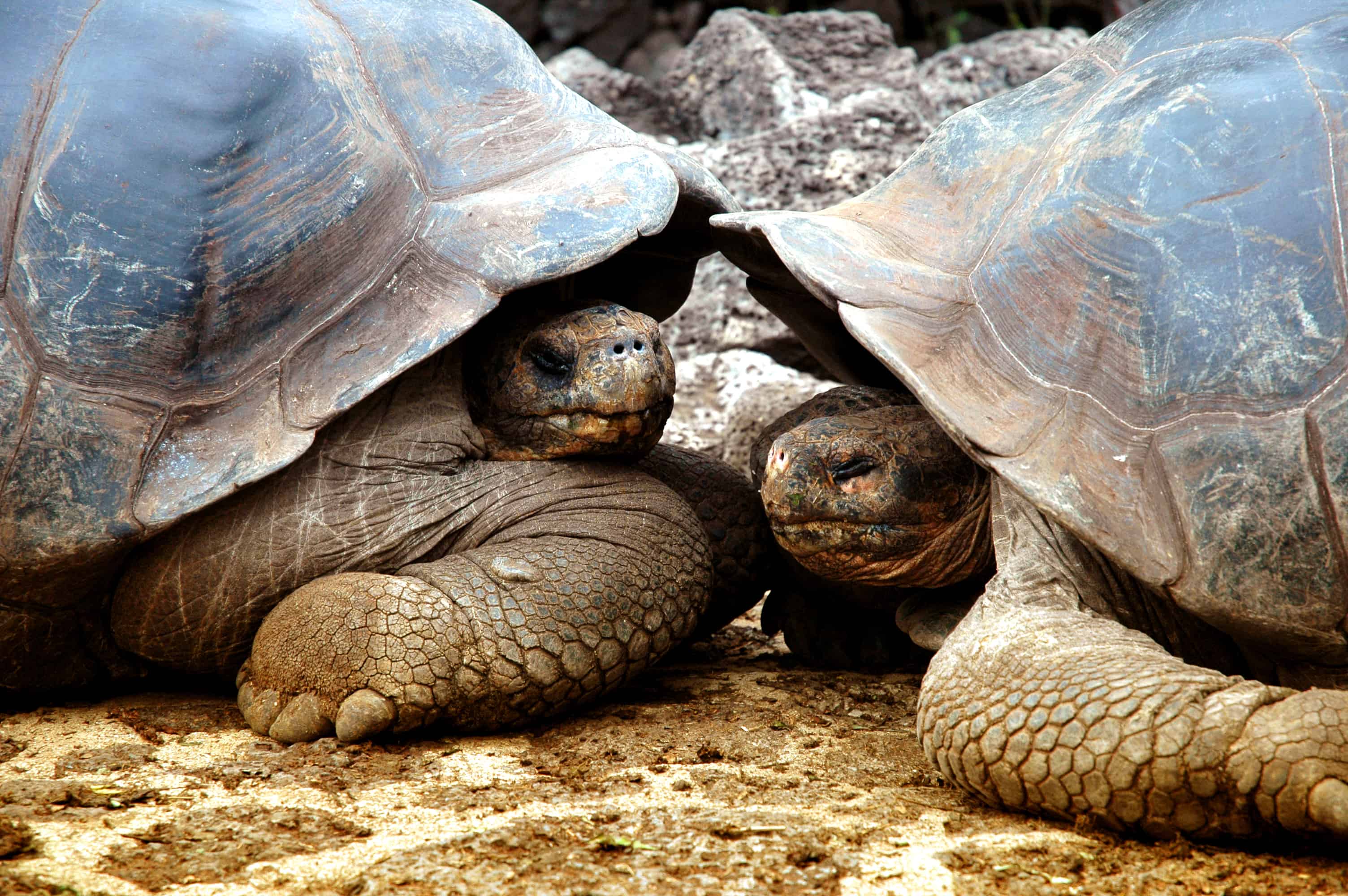 By Merle Rosenstein
By Merle RosensteinDesignated one of 17 ‘megadiverse’ countries by UNESCO, Ecuador boasts an unbelievable array of wildlife (South America’s second smallest country is home to 1,640 species of birds, a record per square metre). And, the country’s four main regions showcase wildly differing geography. Where else can you trek through Amazon rainforest, traverse majestic snowcapped mountains, lounge on calm Pacific coast beaches and stroll through local markets all in one day? Check it out.
Galapagos Islands
The Galapagos Archipelago is made up of 13 major islands lying 960 kilometres from mainland Ecuador. In 1959, 90 per cent of the land and all of the ocean territory was designated as an Ecuadorian national park. The Galapagos Islands are home to many native species and are famous for birds such as boobies, flightless cormorants, Galapagos penguins and magnificent frigate birds.
 Ministry of Tourism EcuadorThe Galapagos Islands are also home to giant tortoises, Galapagos sharks, Galapagos sea lions and Galapagos fur seals.
Ministry of Tourism EcuadorThe Galapagos Islands are also home to giant tortoises, Galapagos sharks, Galapagos sea lions and Galapagos fur seals.Amazon Rainforest
The Amazon Rainforest or ‘El Oriente’, the largest region in Ecuador, boasts nine parks and reserves covering 33 per cent of the region. Home to more than 800 species of birds, 2,500 species of insects and 450 native flora, the Amazon Rainforest is the most biodiverse region in Ecuador. Stay in jungle villages or in jungle lodges complete with tour guides and luxury accommodation. Some Amazon lodges are run by indigenous groups and proceeds from tourism support healthcare and education.
Cuyabeno Reserve. The Cuyabeno Reserve’s lush wetlands and river waterways cradle creatures like tapirs, ocelots, bats, jaguars, pumas, capybaras, anacondas, anteaters, peccaries, poison dart frogs, agoutis, iguanas and 15 different species of monkey. The waters are filled with turtles, pink freshwater dolphins, giant otters, manatees, five species of caiman and nearly 500 different species of fish, including the famous piranha. Of the more than 500 bird species, keep an eye out for woodpeckers, hummingbirds, tanagers, Macaws and toucans.
Papallacta. Thought to have healing properties, the hot springs at Papallacta, just 90 minutes from Quito, offer stunning views of the spectacular Artisana volcano. While you relax in the springs you can glimpse hummingbirds feeding nearby.
Puyo. Puyo serves as a gateway to the wilderness and is a perfect base for exploring the edges of the rainforest.
Pacific Coast
Mindo, set in the cloud forest 2.5 hours northeast of Quito, is part of the protected reserve called the Bosque Protector Mindo-Nambillo. Mindo makes an excellent base for exploring the amazing natural surroundings and outdoor activities. With rare species of birds like the toucan-barbet, the cock-of-the-rock and the golden-headed quetzal, Mindo is becoming known as one of the best birding spots in South America. In addition to bird watching, visitors to Mindo can go hiking, cycling, tubing or take a canopy tour by a waterfall.
Canoa. Canoa is known for its long stretch of beach and great surfing. Horseback riding, hang gliding and paragliding are other available activities.
Machalilla National Park. In Machalilla National Park, dubbed the “Poor Man’s Galapagos”, you can view sea lions, iguanas and blue footed boobies for less than the cost of a tour to the Galapagos Islands.
Malecón 2000 and las Peñas. Guayaquil, the largest city in Ecuador, is the entrance port to the Galapagos Islands. Once the social centre of Guayaquil, the Malecón 2000, along the banks of the Guayas River, links some of the city’s major attractions. Las Peñas, one of Guayaquil’s oldest neighborhoods, is a wonderful place for a stroll.
Andes Highlights
• Artisan market at Otaval. Best visited on Saturday or Wednesday, this well-known market is a great place to interact with locals.
• Quito’s Historic Town. Quito, located in the Central Andes, has a number of museums, churches, and plazas to explore. Quito’s historic town, with its stunning examples of colonial architecture, has been restored and provides clues of what life was like during the colonial period.
• Cotopaxi National Park. Home of the highest active volcano in the world, the park offers mountaineering, hiking, birding, horseback ridding, camping and mountain biking.
• Baños. This laid-back town has hot springs and is perfect for lovers of extreme sports, like whitewater rafting, rappelling and bungee jumping.
• Ingapirca Ruins. Although not as spectacular as Machu Picchu, the Ingapirca Ruins are the most important archeological remains of the Incas in Ecuador.
• Cuenca. This city boasts churches, houses and cathedrals built in the colonial style, as well as a wide array of cultural museums.
More information on this megadiverse destination can be found at www.ecuador.travel


